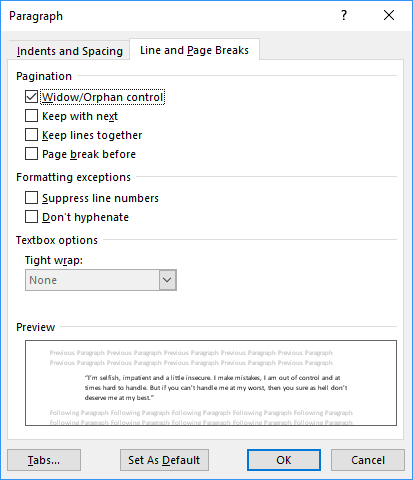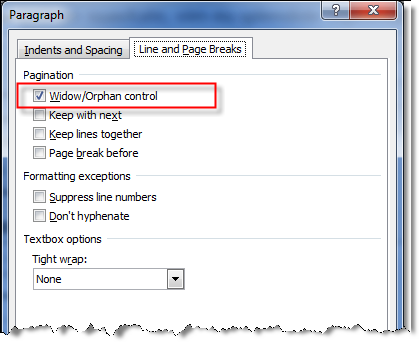

The techniques to fix these pesky little fellows can range from minor adjustments to tracking-or at the extreme end, adjusting glyph scaling. Firstly, Widows cause unsightly (and unnecessary) chunks of white space throughout the text and secondly, Orphans disrupt the flow of reading. Now, why are these two issues considered bad typography? For two reasons. Check out the picture below for a visual perspective. With the disclaimer that both terms can be interchangeable, a Widow is a single word (or two very short words) sitting by itself on the last line of a paragraph and an Orphan is the last line of a paragraph that is situated at the start of a column or even worse, on a different page to the rest of the paragraph. Why not Photoshop? Well, you shouldn’t be setting too much type in Photoshop as that’s not what it’s designed for, but if you do, some of these techniques may work-no promises though!įirst off lets have a quick review. But using the standard tools that come with word-processing and layout programs can keep most orphans and widows out of your type.Share I listed Widows and Orphans as an issue in a previous post, “ Five Rookie (and sometimes seasoned pro) Typography Mistakes I See Everywhere!”, I suggest you read that post first as this is a follow on article that expands on the previous by outlining a number of techniques that can be used within either Adobe InDesign or Illustrator to fix Widows and Orphans.
#Widows and orphans in word free#
I don’t know how the Free Lance–Star ended up with those orphaned headings. This advice of mine doesn’t exhaust the possibilities of things that can go wrong. Use paragraph formatting to apply space above and below (Word’s heading and paragraph styles already include such spacing).

To ensure that “keep with next” does its job, don’t type blank lines to create paragraph spacing. As far as Microsoft Word is concerned, a blank line with a paragraph return at the end is just another paragraph, and “keep with next” will keep a heading with that blank line but not with the paragraph after that, the one that has text. This is not desirable, but people do it when they use returns (that is, type blank lines) to create space between paragraphs. You also can defeat the “keep with next” attribute by making the next paragraph blank. You can apply this attribute to other paragraphs that should stay with the next line-for example, a paragraph that introduces a numbered list. Also, its heading styles include a paragraph attribute called “keep with next.” It will push a heading to the next page or column to keep it with the first paragraph that follows.

Microsoft Word’s default paragraph formatting includes widow and orphan control: it will push an orphan to the next page or column, and it will push an extra line to the next page or column to prevent a widow. The word-processing and layout programs I’m familiar with prevent them automatically. Words Into Type is blunt about it: “Widows must be eliminated.” Itĭoesn’t address orphans, but if it did, I imagine it would be similarly stern.įortunately, widows and orphans are usually easy to eliminate. (They’re from the Fredericksburg, Va., Free Lance–Star, Sep. The orphaned headings in the picture above make me shudder. Definitions vary, but because I used to work in a typesetting house before desktop publishing was invented (yes, we used stone tablets and chisels), I’ll give my definitions: a widow is the last line of a paragraph that sits alone at the top of a page or column an orphan is the first line of a paragraph or (shudder) a heading that sits alone at the bottom of a page or column. Widows and orphans-how sad is that? In typesetting, the words denote sad situations: a word or a line of type separated from the rest of a paragraph.


 0 kommentar(er)
0 kommentar(er)
